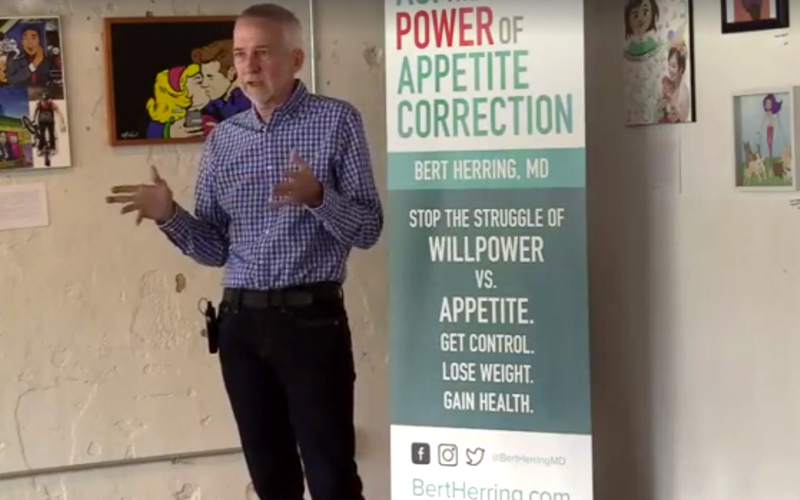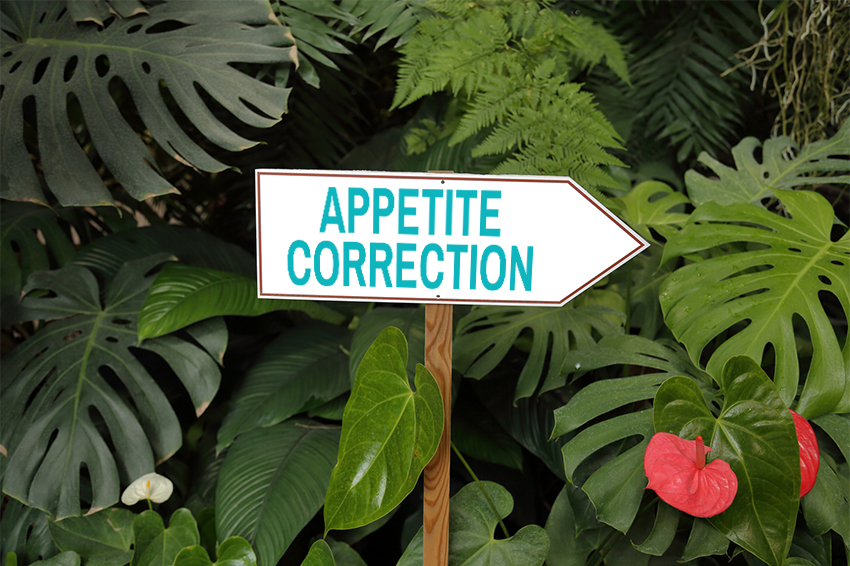When losing fat through an appetite correcting (AC) eating schedule like Fast-5 or other intermittent fasting schedule, it’s not unusual to encounter a time when, after weeks of steady progress, the fat loss stops for no apparent reason. This leveled-out time is called a plateau. Hitting a plateau can be frustrating because after finally finding something that’s working for you and that’s sustainable—it stops working.
What Can You Do?
STEP 1: WAIT
The first step in breaking through a plateau is to call up your patience. Keep doing what you’ve been doing and give your body some time. It’s been letting go of its reserve fuel (fat) for some time and may need a few weeks to get the message that yes, there’s plenty of food available, there’s no starvation risk and there’s no need to hold on to the remaining surplus fat. This kind of “hold” plateau may last from a couple of weeks to several months. Obviously, waiting several months is no fun, so if, after 2-3 weeks, you still haven’t seen any more loosening of your clothes or weight loss, consider one of the other plateau-breaking steps below.
You may wonder how someone could be patient enough to wait months to break through a plateau. Well, sometimes people lose a lot of fat and plateau at a point 20-30 pounds above their lean weight. It’s a plateau, but not necessarily far from their goal body. It is a long way from where they started, so they’re happy to have come as far as they have. Satisfied, they sustain their AC schedule as maintenance. Then, after months, another pound drops unexpectedly, then another, and progress continues toward a leaner body.
STEP 2: CHECK FOR CHANGES
When you find yourself on a persistent plateau, look around and see if anything has changed. One of the most likely culprits is stress. If your stress level has recently increased, you have may have plateaued because your body is interpreting your stress as meaning there may be tough times getting food in the near future. To break a stress-response plateau, you’ll have to either do something to reduce the stress or find ways to manage it better, such as meditation, exercise or combinations of the two such as yoga.
Sleep can also be a big factor. Has something been interrupting, delaying or shortening your sleep? Have you started a different work shift? Sleep and stress are tightly intertwined. Your weight loss may go on hold until your body becomes better adapted to a new sleep schedule or you find out how to restore your sleep quality.
Another change that can stall your progress is a gradual slip to a longer window or a more erratic schedule. Are you keeping a consistent eating window of five hours or less every day of the week? If not, go back to the basics for three weeks and see if your progress resumes.
Have you slipped back to an old habit of maintaining a minimum calorie intake? Remember that AC/Fast-5 has no minimum daily intake. Let your body do the calorie counting and don’t force yourself to eat more than you’re hungry for “just to keep your metabolism up.” A minimum calorie intake is not necessary for AC; trusting your body is.
Have you added a tweak, like adding cream to your coffee, milk to your tea or chewing sugarless gum? If so, the plateau may be your body’s way of saying your tweak isn’t going to work. Drop the tweak and try three weeks without it.
Have you started a new medication or a new supplement? Many drugs have side effects including weight gain. If a new medication seems to be the cause of your stalled progress, ask the prescribing physician for an alternative or lower dose. Supplements may have contaminants or unlisted ingredients that can cause trouble.
STEP 3: SET YOUR BODY UP FOR SUCCESS
Before going on to other plateau-breaking steps, make sure you are giving your body your best shot at appetite correction. That means making reasonably good and balanced food choices with minimal amounts of sugary foods. Meals that are rich in carbohydrates like pasta-based entrees tend to prompt more appetite the following day, so try to avoid having super-BCPs as the main dish and use them as side dishes if you have them. (“Super-BCP” is a way of remembering a list of foods with lots of easily digested, quickly absorbed carbohydrates: SPRBCP: sugars, pasta, rice, bread, cereal and potatoes).
PLATEAU BREAKERS
If you’ve given it time, and you can’t identify a change that explains your plateau, you may want to try to break the plateau with one of these tools.
- timed stepping
- skip days
- occasional longer fast
- probiotics
- avoid predigested foods
Timed stepping is aimed at making sure that your stomach’s stretch sensors give strong feedback about how much you’ve eaten. It’s described fully in the AC book.
With timed stepping, decide on a first, moderate portion of food for your break-fast. When your window opens, have this portion. When you’re finished, if you still feel hungry, set a timer for 30 minutes. While the timer is counting down, plan and prepare your next portion, but don’t eat it until the timer goes off. Repeat as necessary until your window closes. The idea is to start modestly, so your stomach is not immediately stretched to capacity. When you break your fast, you’ll know you’ll have a number of opportunities to eat more if you want to, so you don’t have to start with a large meal. The 30-minute timer between portions gives your body a chance to digest what you’ve eaten, measure its calorie content and send feedback to your appetite center.
Skip days mean you go off your usual AC schedule for a day. It’s not a “cheat day” because it’s not cheating. A skip day doesn’t have to have the traditional three meals—it means a day of eating however your body guides you. If an early break-fast sounds good, go with it. A little bit of irregularity in your schedule can sometimes shake things up and get your weight loss going again.
Longer fasts can also jumble up your schedule in a way that may help break through a plateau. It’s the opposite of a skip day—instead of eating more frequently for a day, you don’t eat at all. On a Fast-5 schedule of a 19-hour fasting window with a 5-hour eating window, a long-fast day extends the 19-hour window by 24 hours to 43 hours. If you’re well adapted to a Fast-5 schedule and still have surplus fat, you may be surprised at how easy this is to do. As usual, the hardest part is likely to be social friction about not eating rather than your ability to do it comfortably.
Probiotics may also help. Recent research indicates that our gut microbes can have a big impact on how we process food, and in some cases the differences can be surprising. To make sure you have a healthy “inner garden” of gut flora, adding quantity and variety of good bacteria may help. You can do that by eating fermented foods like yogurt, kefir, sauerkraut (not canned—canning kills the bacteria) and kimchi and by taking probiotic supplements. Increasing your intake of raw vegetables and expanding the variety of vegetables you eat may also help. Vegetables grown in your own garden or other private, non-commercial garden without pesticides, herbicides may host a wider variety of beneficial organisms. Taking probiotic steps is not a quick fix; once you implement a change, it may take several weeks to see any difference like the resumption of weight loss.
Avoiding predigested foods can improve your body’s sensing of your calorie intake and give you more meal satisfaction at the same time. A predigested food is anything that you could chew and eat raw, but have cooked, ground or chopped mechanically instead. Examples include cooked vegetables, peanut butter (eat peanuts instead), shakes and smoothies (eat the whole vegetables and/or fruits instead).
What’s Your Plateau Experience?
Have you experienced a plateau? Did you find a way to break through it? What worked for you? Please let me know in the comments!



5 comments
I’m in Australia and approaching 70 years old. I began only eating between 2:00pm and 7:00pm about a year ago. I was not aware of any theory behind this but chanced on eating one meal a day during a 200 klm walk along a section of remote coastline. I couldn’t take food (too heavy) so only ate when I came to small settlements once a day. It took me 6 days to walk 200k (sleeping rough) and when I’d finished I had lost 10 kilos and felt great. I felt like I could have walked around the world. However, I seem to have reached a weight plateau at around 80 kilos. I feel as though my ideal weight would be somewhere below 75 kilos. When I eat, I tend to eat oats, nuts, fruit, yogurt and organic vegetables with some oily fish and occasionally some lamb. My main challenge is that my wife and I share cooking (week on – week off). She likes to eat 3 meals a day so we have lunch and dinner together. This can take me away from the one meal a day although I try to eat sparingly at night. Overall, it’s been very easy. I’m delighted to have found you and this site because it provides a rationale for what seems quite natural. Thanks.
Is the basis of the AC program to become keto adapted? How many hours into the 19hr fasting state do we begin using ketones for fuel as opposed to glucose?
I wonder if you can comment on the news about Dr Ohsumi winning the 2016 Nobel prize for his work on autophagy? As I understand it, one’s body employs thiese genes in order to clear away ‘the old junk’ to make way for new cells. Is that not kind of what we adherents to AC are doing by making our body use up our superflous fat? I see a link but wondered if Dr Bert can perhaps touch on this prize-winning work. Thank you
Autophagy is one of the mechanisms invoked for the lifespan-extending effects of intermittent fasting and calorie restriction in animals. No life-extension effect has been proven in humans, but because humans live so much longer than most mammals, it may be a long time before we know one way or the other. The basic premise is that if you have abundant protein intake, your body does not need to recycle the “trash” that’s accumulated in cells. If protein intake is low, your body does have mechanisms available to recycle the trash, which leads to reduced debris in the cell and, at least in some cases, better cell function. Using surplus fat isn’t really the same as autophagy in this sense, but it is a case of your body running on its stored internal fuel rather than taking in new stuff, so it’s similar as the human body can be seen as analogous to a single cell. Autophagy is one of the reasons it’s really hard to pin down a minimum protein requirement…what you need depends on how much your body can recycle and for how long. We know that too little protein eventually leads to diseases like kwashiorkor, but most protein intake recommendations are based on studies looking to see how much protein could be ingested before it is wasted (as measured by amino acids spillover released in the urine).
Yup. Plateaued about a month ago. I was distressed bcs I find the lifestyle suits me and can easily adhere to the 19/5 every day but I was concerned that this ‘flat time’ would last. With a holiday looming, I worried that I would jeopardise my weight loss but after reading a few ideas from others and checking out this website, thought I could get thru this hiatus bcs I planned to eat a fab B&B breakfast or chomp that lobster roll when it was on offer. I was off my established routine but found I really wasn’t all that hungry so ate little and usually just had an apple or a black tea while my pals were eating b’fast and lunch. To my great surprise I arrived home well off my plateau and had in fact lost 3 pounds! Yipee & Thanx!